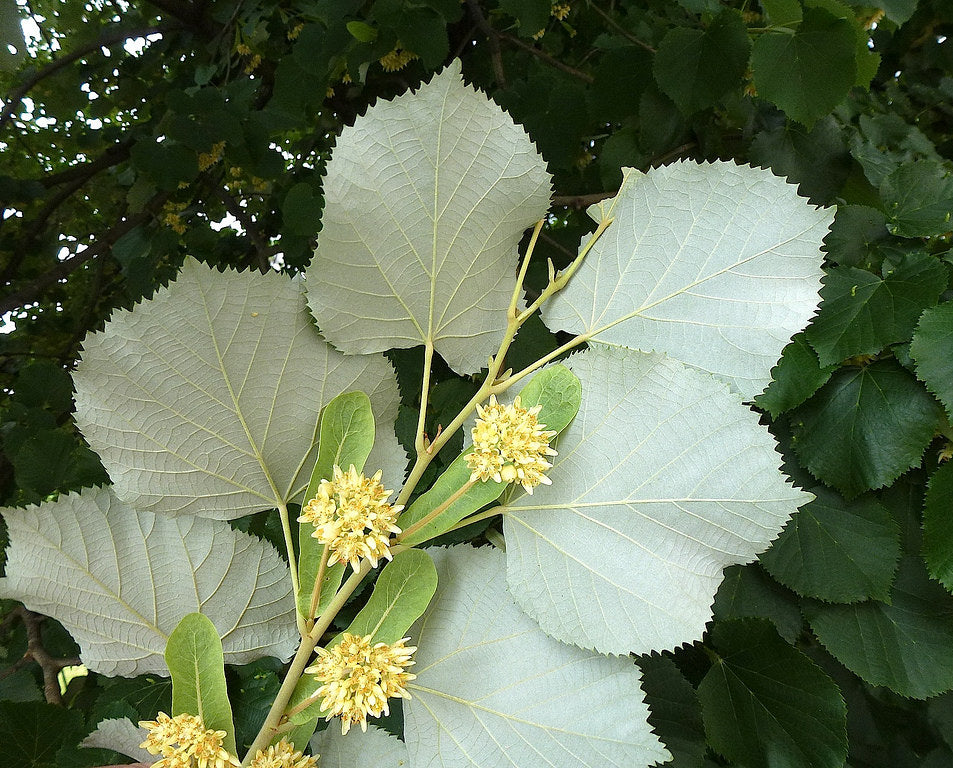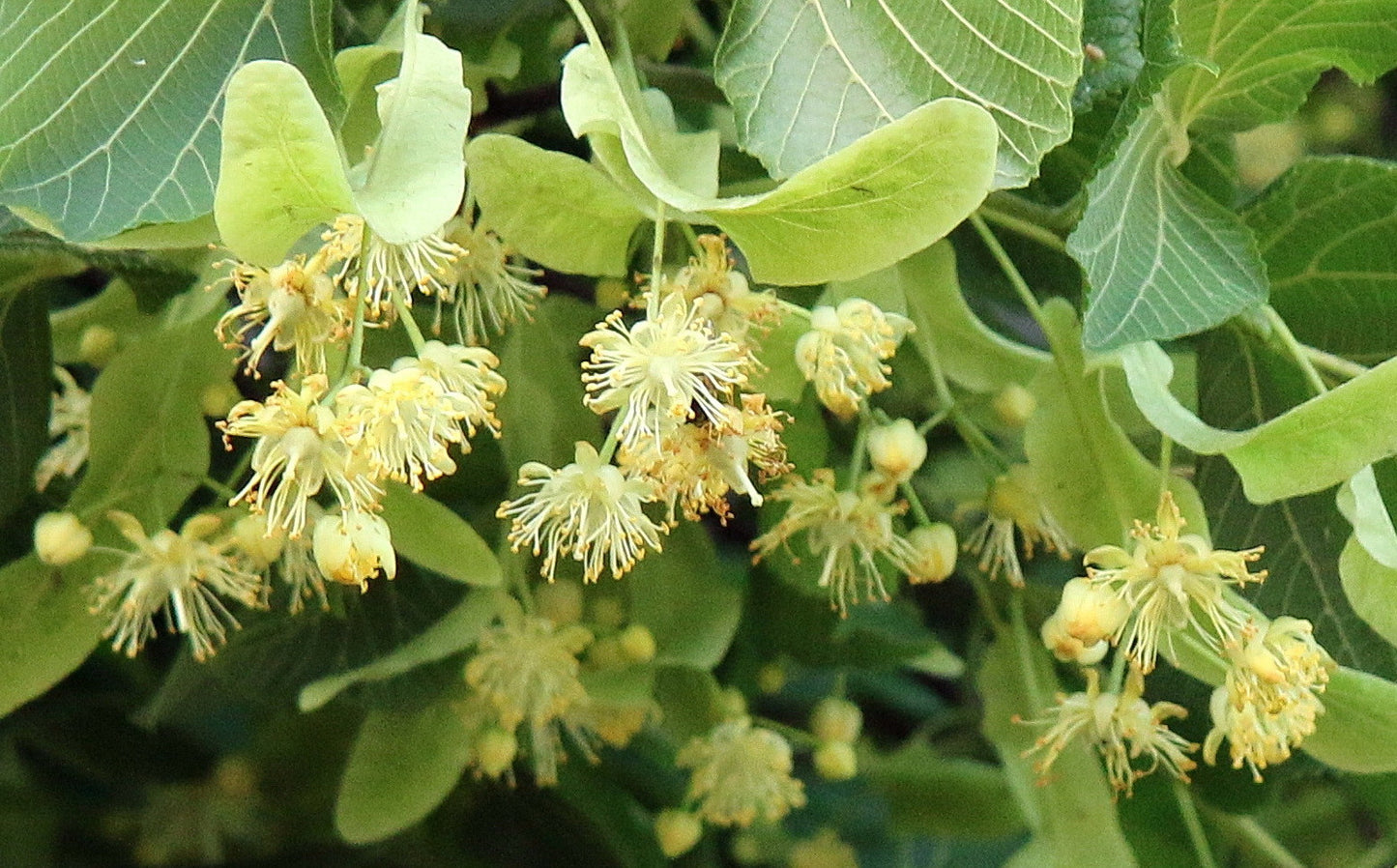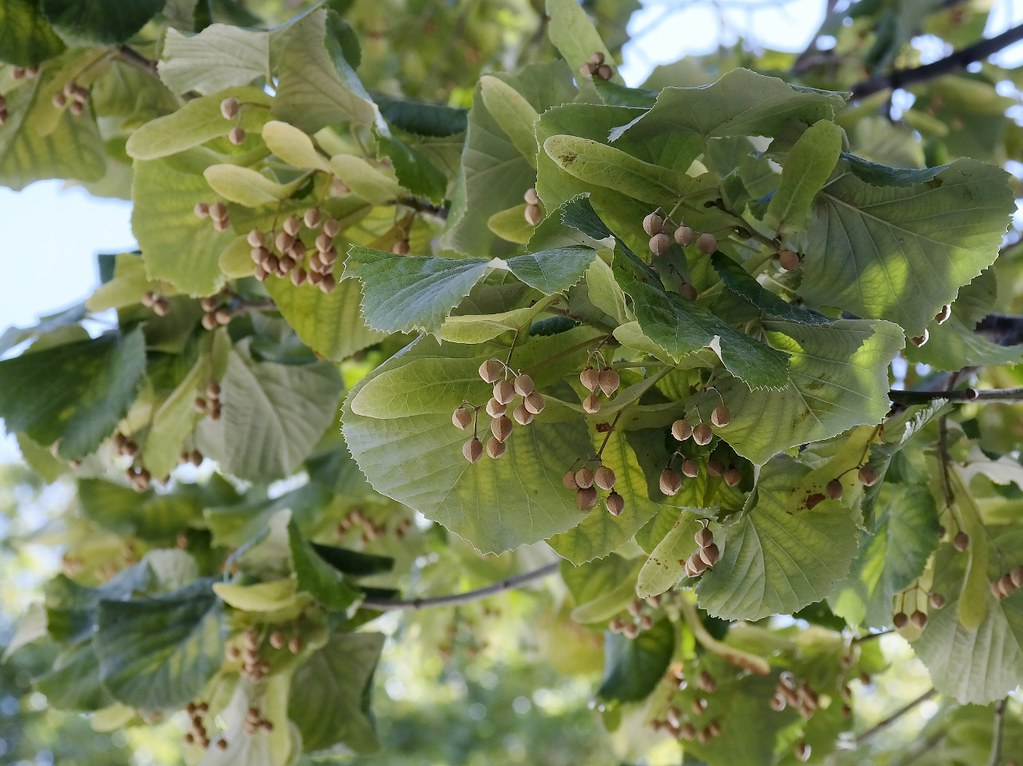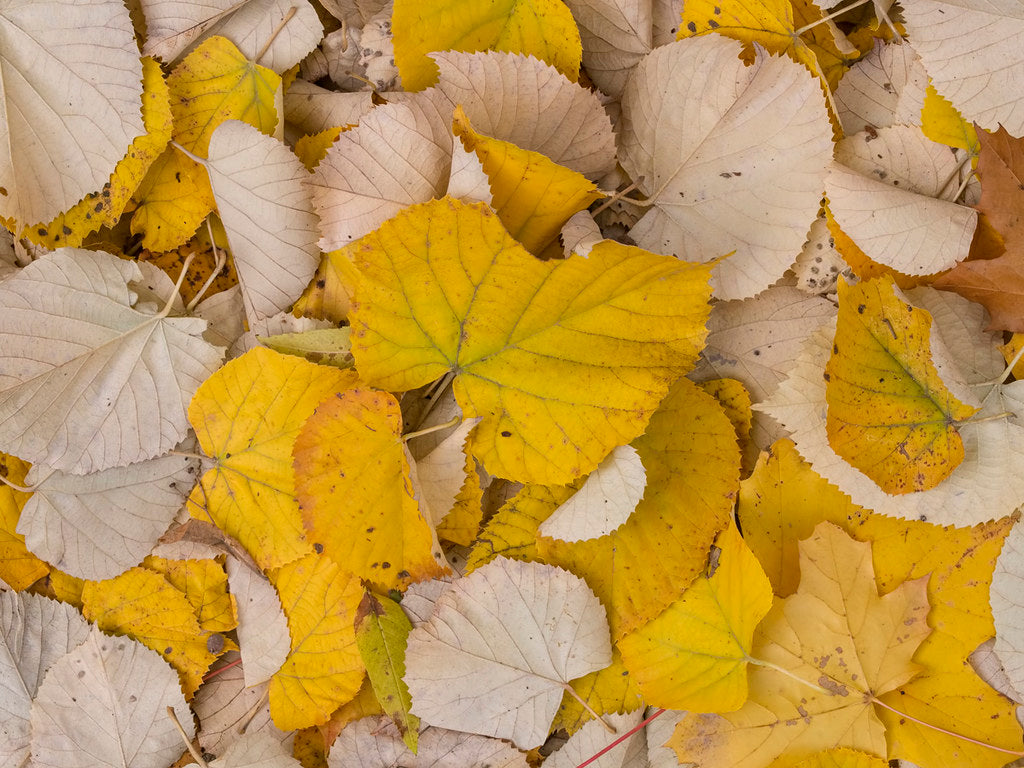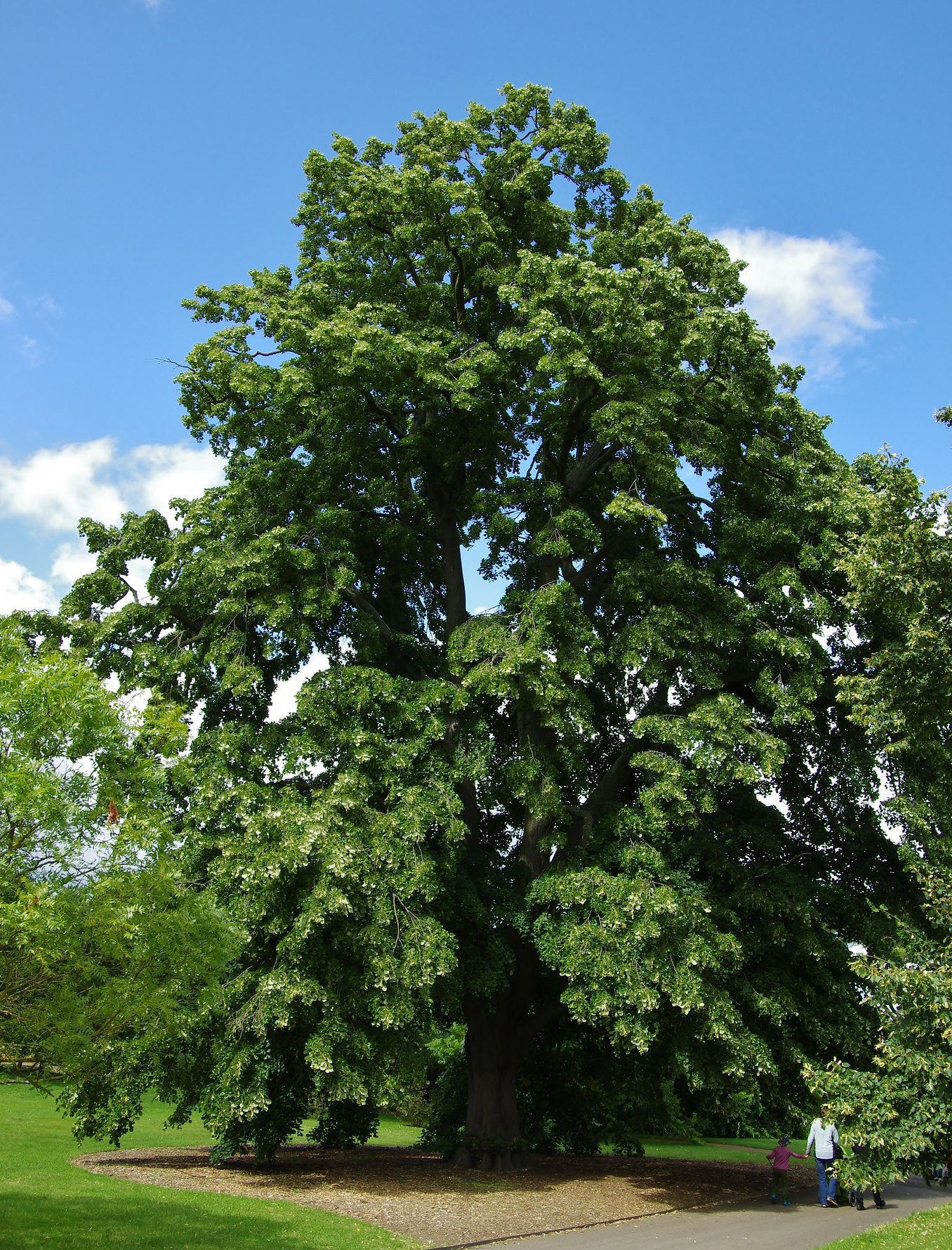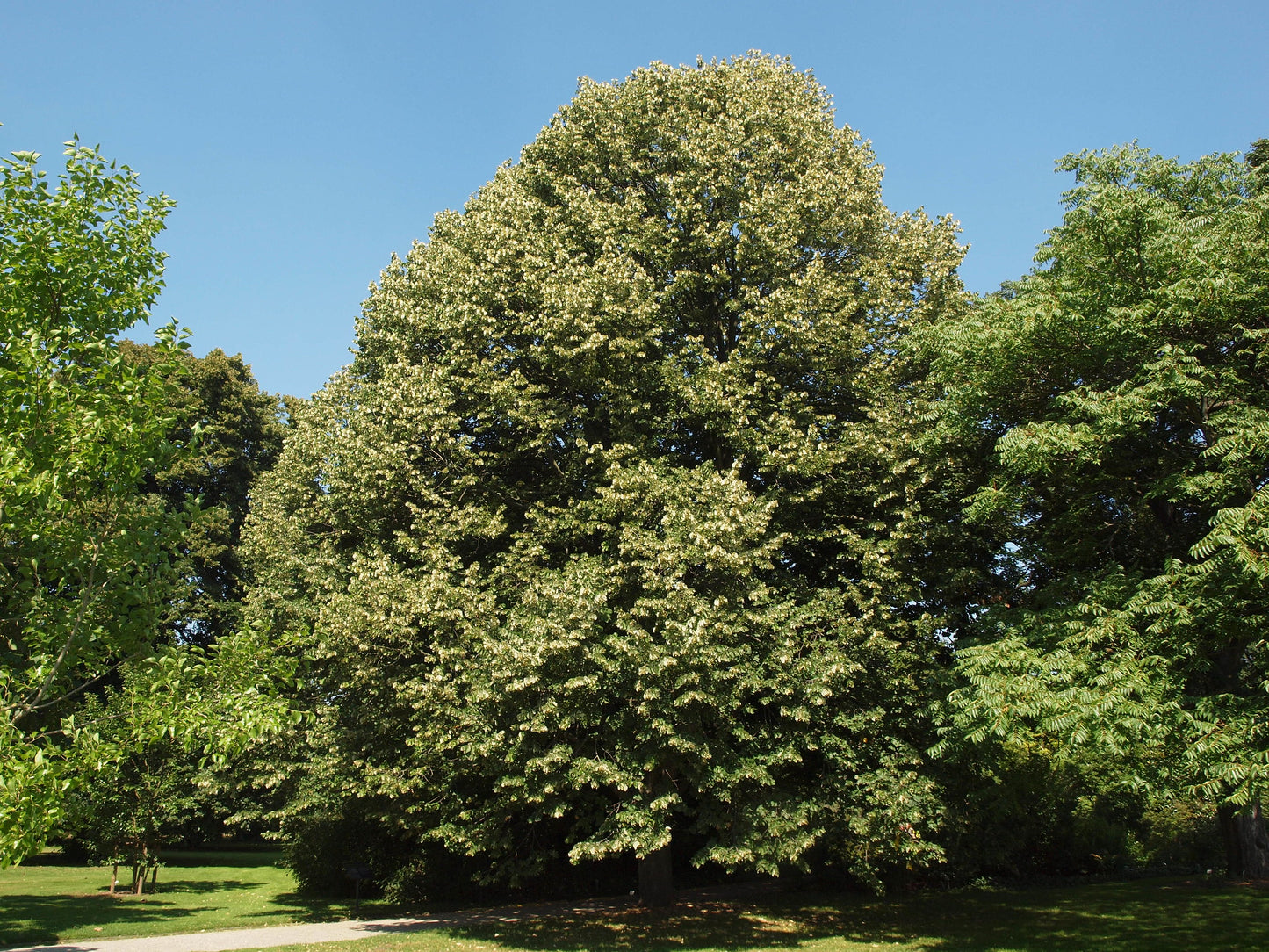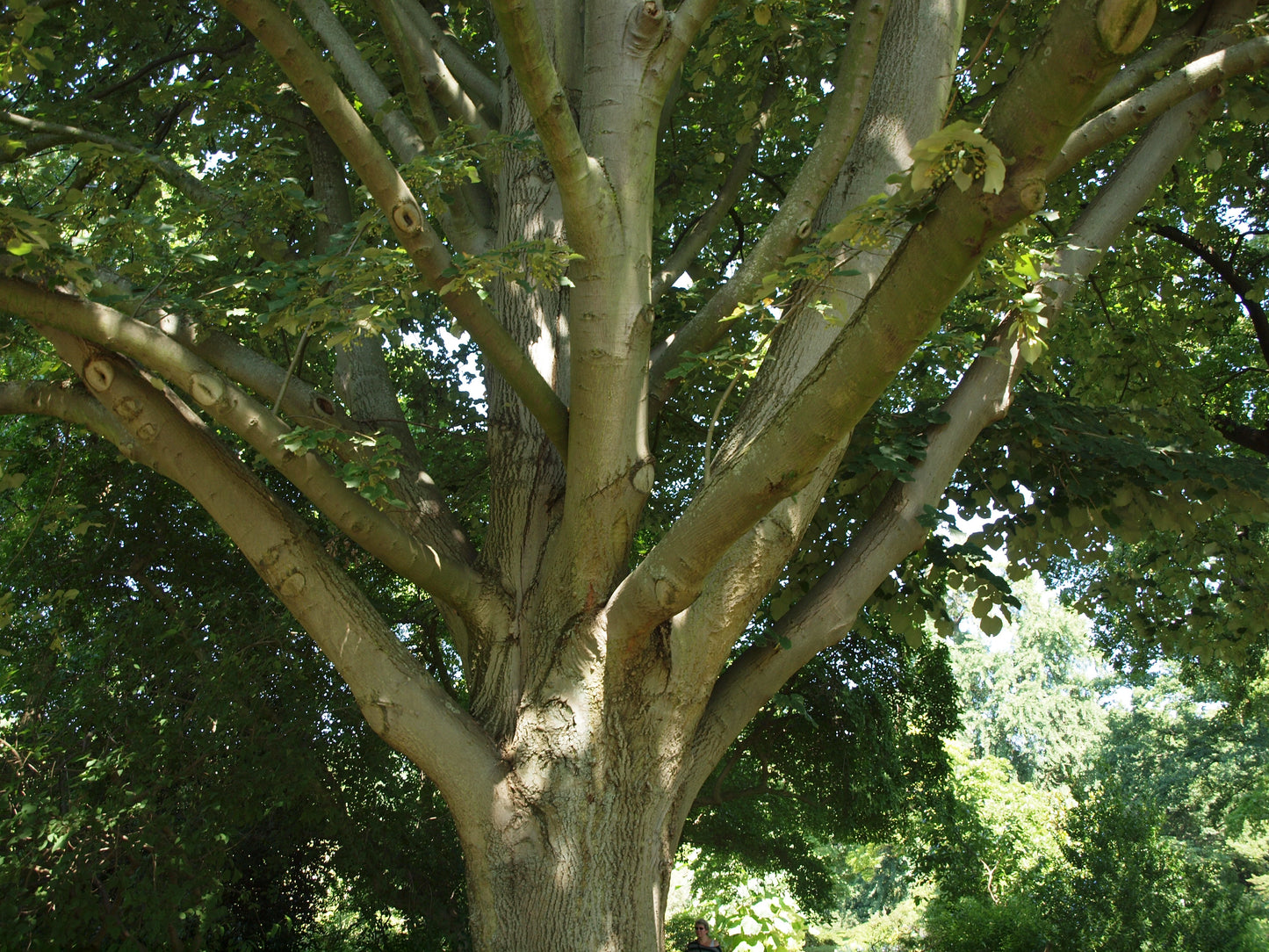Floridaseeds
Silver Linden Silver Lime Tilia tomentosa 10 Seeds USA Company
Silver Linden Silver Lime Tilia tomentosa 10 Seeds USA Company
Couldn't load pickup availability
Tilia tomentosa, commonly known as silver linden or silver lime, is a deciduous tree that typically grows to a height of 20-30 meters (65-100 feet) with a spread of 10-15 meters (30-50 feet). It has a broadly pyramidal or oval-shaped crown when young, which becomes more rounded with age. The bark is smooth and grayish-brown when young, becoming darker and furrowed with age.
The leaves of Tilia tomentosa are alternate, simple, and heart-shaped, with serrated edges. They are dark green on the upper surface and densely covered with silvery-white hairs on the underside, giving the tree its characteristic silver appearance. The leaves turn yellow in the fall before dropping.
In late spring to early summer, Tilia tomentosa produces small, fragrant, pale yellow flowers that hang in clusters from slender stalks. These flowers attract bees and other pollinators and are followed by small, round, hairy fruits known as nutlets.
Tilia tomentosa prefers moist, well-drained soils and full sun to partial shade. It is tolerant of a wide range of soil types and pH levels but prefers slightly acidic to neutral soil. Hardy in zones 4-7.
Growing Instructions for the Silver Linden
The seeds have a period of dormancy. They can be planted outdoors in the fall or winter for spring germination or they can be cold stratified to simulate winter conditions and to break their dormancy at any time of the year. 1. Place the seeds in a plastic bag and seal it. Store the bag in a refrigerator for 3 months. 2. The seeds like moist, well-drained soil. Fill a pot with a mixture of half potting soil and half sand or vermiculite. Water the mixture so that it is moist but not wet. 3. Sow the seeds on the soil and cover them with a thin layer of soil. 4. Water the container and leave it to drain. 5. Put the pot in a warm, sunny area. 6. Water the pot regularly so that the soil is moist but not wet. 7. The seedlings can be transplanted when they are a few inches tall.
Materials
Materials
Shipping & Returns
Shipping & Returns
Dimensions
Dimensions
Care Instructions
Care Instructions
Share
